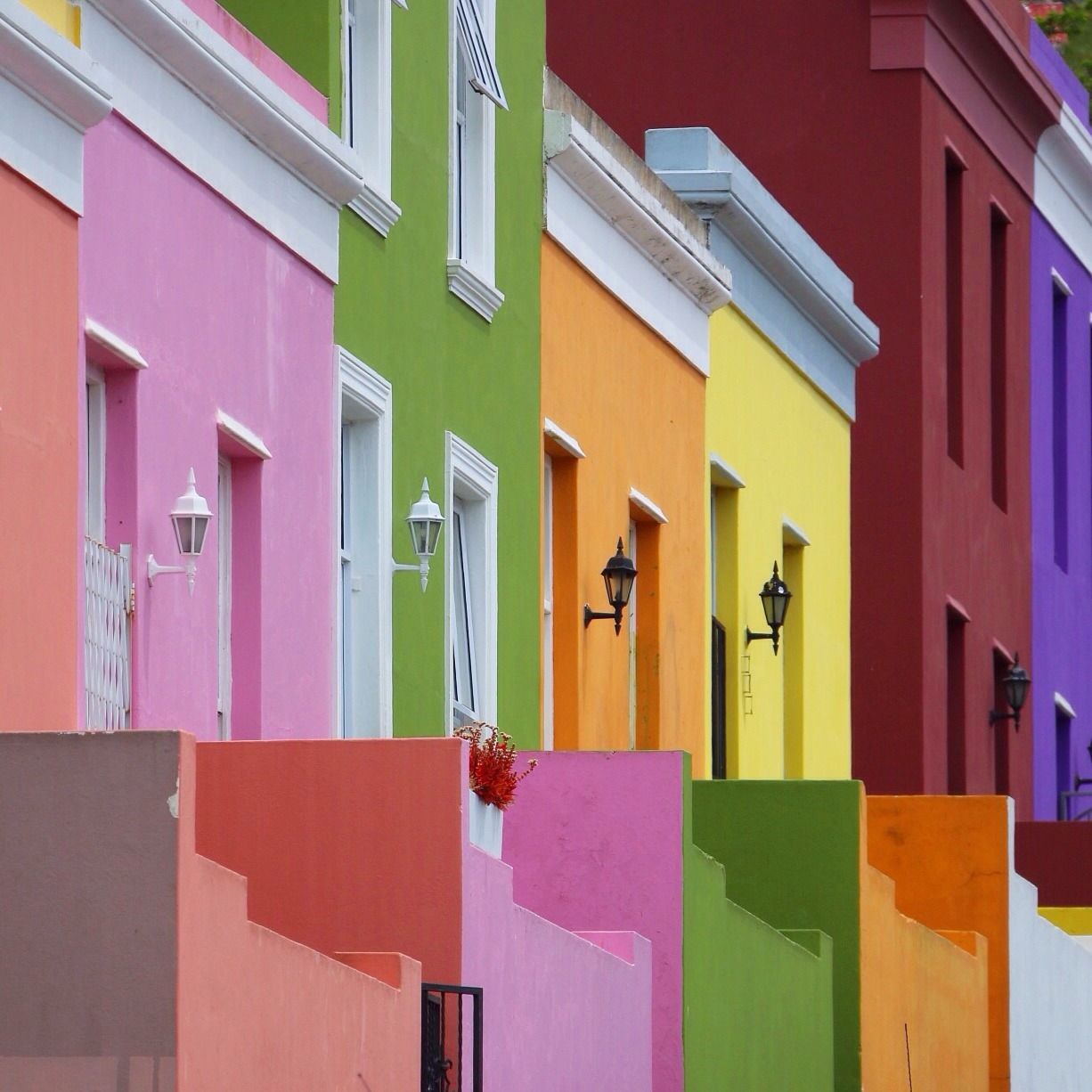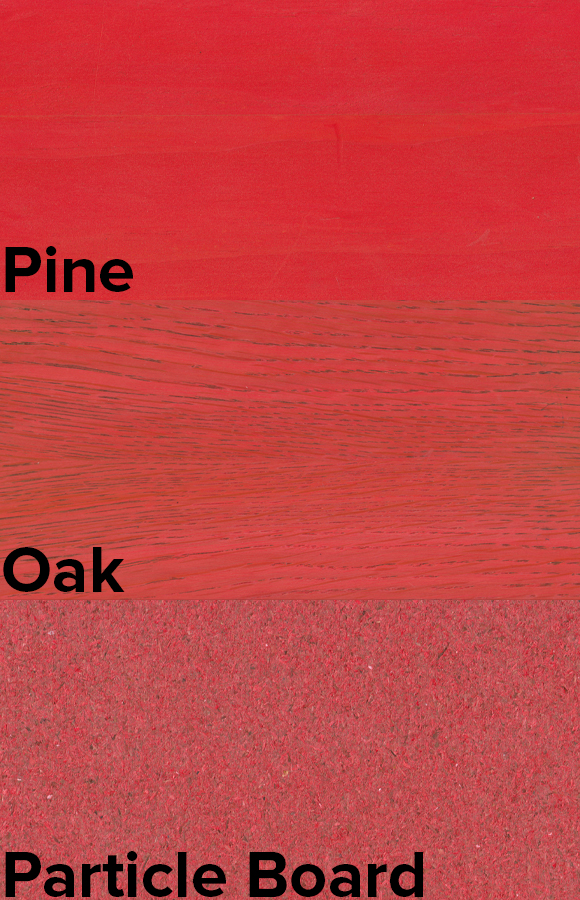
A Guide To Colour: White is White?
To demonstrate the point that the final finish is dependent on the type, age and condition of the wood, we applied the same red wood dye to 3 different pieces of wood and scanned the results.

This experiment shows how the same wood finishing product, regardless of colour, will give very different results on pine, oak and particle-board. Colour would differ again if applied to beech, mahogany and larch for example. This shows the importance of always doing a test area before starting any project to assess product suitability, colour and final finish.
Other factors to consider…
When looking at or choosing a wood stain, coloured varnish or wood oil for a project, there are several things to consider.
Firstly, is the timber to be stained smooth or rough sawn? Rough sawn timber has a more open grain structure than sanded wood therefore allowing for deeper penetration of the wood finish. This will result in a considerably deeper, darker finish than if applied to a sanded piece of wood. When sanding wood, the coarseness of the grit will have an effect. Wood sanded with an 80-grit sandpaper will take on more stain than wood sanded with a 240-grit sandpaper. (Typically, furniture and floors are usually sanded to around 120 – 150-grit on their final sanding).
Secondly, monitor or screen calibration. Viewing colours on a computer monitor for anything should never be taken as gospel as every type of screen and monitor is calibrated differently in terms of colour, contrast and brightness. Look at the same product be it a jumper, watch strap or paint swatch on various monitors, laptop screens and mobile phones and they will all reproduce a slightly different colour tone or shade. These images should only be used as a colour guide rather than a true representation of the actual product colour.
And lastly, individual eyesite. Many of us like to think that we have perfect or at least good vision, and believe that what we see is what everyone else sees. Truth is, just like computer monitors and other screens, our own perception of colour tone and strength is individual to us. One person might see black whilst another may see a very deep blue or purple. Who is correct?
